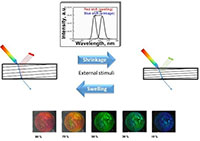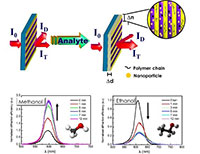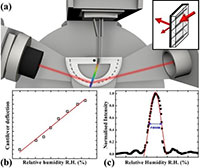Functionalised optical structures
Contact: izabela.naydenova@tudublin.ie
This research domain explores applications of functionalised holographic structures capable of responding to their environment. The methods of fabrication of the diffractive optical structures involve two/multiple beam holographic recording or SLM shaped beams. In addition to the well-studied holographic sensors based on transmission and reflection holographic gratings, new sensor geometries including opto-mechanical structures or polarisation holograms are explored. The theoretical modelling of the different functionalised structures focuses on predicting and optimising their response to various external stimuli and identifying the most suitable structure for each application. Some of the sensing applications we work on are: detection of Volatile Organic Components, CO , presence of heavy metal ions in drinking water, selective detection of sodium and potassium concentrations in physiological solutions, detection of bio-indicators associated to the wound healing processes, as well as detection of temperature, relative humidity, pressure and alternating magnetic field. The unique and difficult to mimic diffractive properties of these structures make them also suitable for application in security (documents security and anti-counterfeit labels).
- We are looking for collaborations with researchers active in:
- Developing novel sensors compatible with functionalised diffractive structures
- Design and synthesis of functionalised materials suitable for integration in our sensor devices
- Shape memory polymers design and fabrication;
- Functionalisation of surfaces for bacteria immobilisation;
- Characterisation of alternating magnetic field equipment for medical applications;

| 
| 
|
|---|
